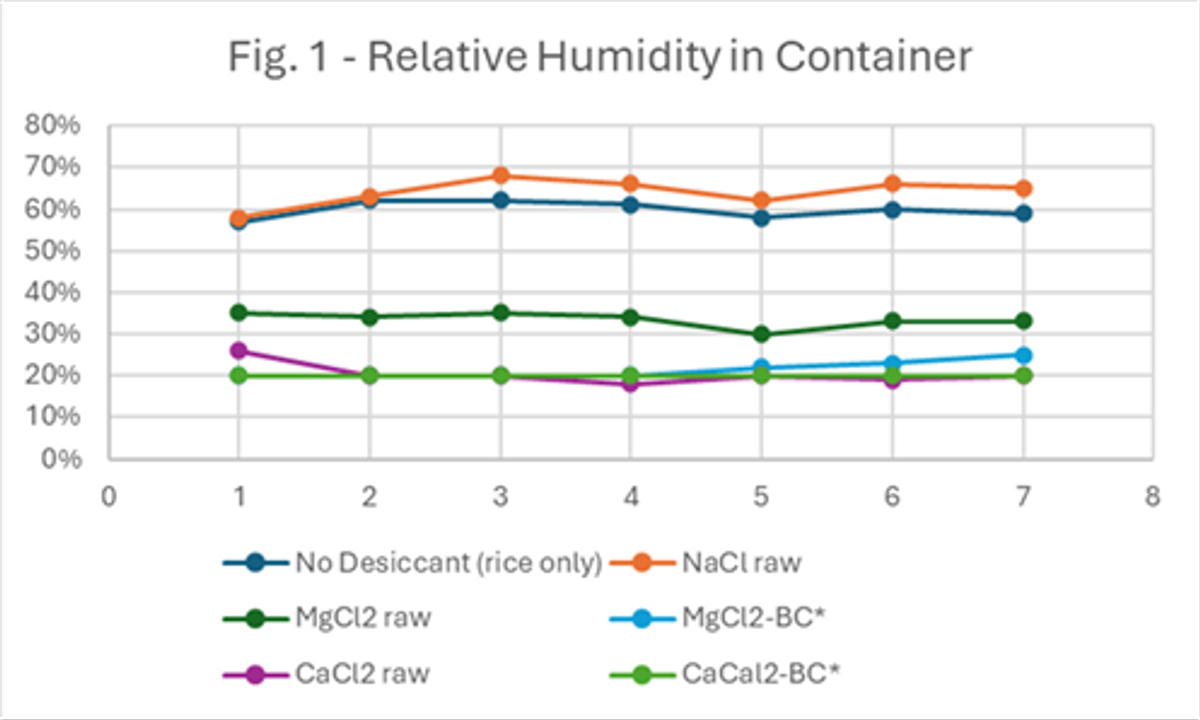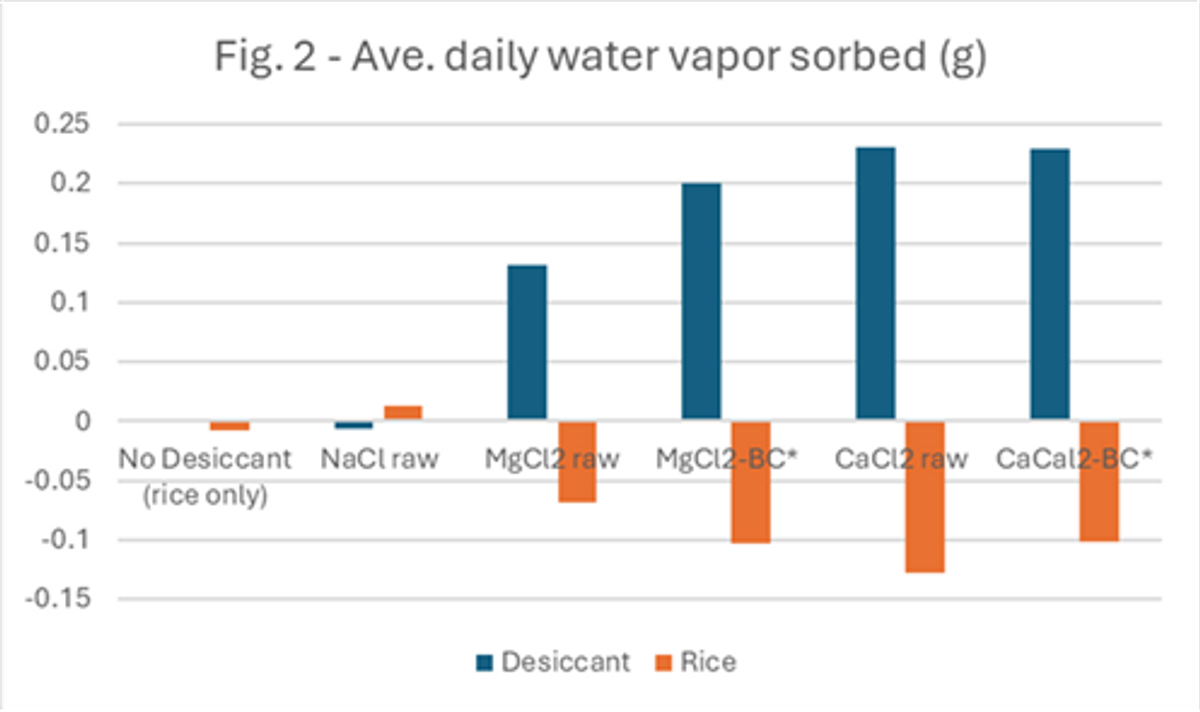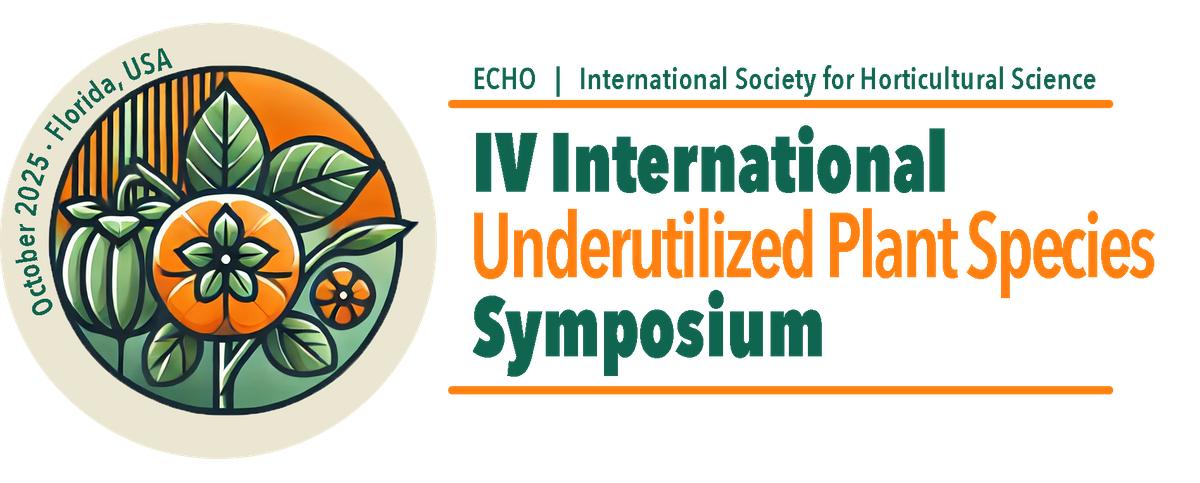Dear friends of ECHO,
We are grateful for like-minded folks who have a passion for working on options and strategies for improving the lives of small-scale farmers. This Research Newsletter will update you on some activities undertaken since April 2025 and alert you to opportunities for engagement.
ECHO Research Updates
Stable, low storage temperature improves seed vigor!
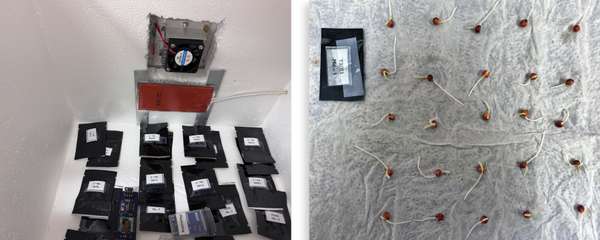
Sorghum seeds in mylar packts in a temperature controled box (left) to assess the importance of storage temperature on germination (right). Source: Tim Motis
We recently completed a six-month trial looking at the importance of stable temperature in storing seeds. As mentioned in our previous newsletter, the trial compared the following three temperature environments, with each environment created and maintained in a Styrofoam cooler.
- Fluctuating temperature: nighttime lows of 10-12°C and day-time highs of (31-33°C).
- Stable warm: close to 31°C.
- Stable cool: in a CoolBot-controlled room at 9-10°C.
Sorghum seeds were kept in mylar packets (5-mil thickness), which excluded humidity, keeping seeds dry throughout the trial. Packets were opened after 1,3, and 6 months and data collected on the percentage of seeds that germinated and the percentage of seeds with roots reaching 20 mm or more in length. Root length served as an indicator of vigor.
Kept dry, the seeds germinated well (over 90%) regardless of the storage temperature environment. However, after 6 months of storage, the seeds kept at a stable, cool temperature had the highest vigor. The use of earth bag structures, hillside bunkers, and buried cisterns are all ways to maintain low, stable temperatures (ECHO Asia Note 38). To also keep seeds dry with these practices, seeds can be stored under vacuum and/or with a desiccant.
Biochar and magnesium/calcium salts for drying seeds
ECHO volunteer, Tom Bierma, has been experimenting with magnesium chloride (MgCl2) and calcium chloride (CaCl2), alone or with biochar, to evaluate their potential for seed drying. Both of these salts have a range of applications and are thus quite widely available. Bierma found that these salts absorbed more moisture than silica gel.
In related correspondence, he shared the following regarding:
The rationale for other salts besides sodium chloride (NaCl):
“I’ve learned that NaCl only adsorbs water vapor after the relative humidity (RH) reaches 76%. That means it would do a great job reducing a seed storage container to 76% RH, but not lower. (I have confirmed this with a hygrometer.)”
Why combine MgCl2 and CaCl2 with biochar, and how was it combined?
“…the goal of impregnating the salt into biochar is to prevent it from liquifying, and also to increase its surface area. …Bamboo biochar was soaked in a saturated MgCl2 solution and then dried.”
Results of a “Rice Bowl” test
“I tried a new test to better simulate seed drying or storage conditions – I call it the “rice bowl” test. A tupperware container contains: 1) A small (1.5g) reservoir of water, 2) A cup with 5g desiccant, and 3) 15g retail white rice (as a stand-in for seeds) on the floor of the container. The questions are how well the desiccant can protect the rice from moisture slowly evaporating from the reservoir, and keep the relative humidity (RH) at “safe” levels in the container. I tested six desiccants: Control (no desiccant), raw NaCl, raw MgCl2, MgCl2-BC, raw CaCl2, and CaCl2-BC.
Results from the first week are impressive (see two charts below). Fig 1 gives the RH in the rice bowl container by day of testing. RH for Control and NaCl quickly rose to 60%+, while the others maintained good storage RH conditions. Fig. 2 gives the average daily water sorbed by the desiccant and the rice over the week. It shows that raw MgCl2, MgCl2-BC, raw CaCl2, and CaCl2-BC not only protected the rice from the water reservoir, but actually further dehydrated the rice! About half the water vapor adsorbed by the desiccants came from the rice. This suggests they may work well for seed drying.”
Charged vs non-charged biochar
An update by Shaun Snoxell from ECHO’s Regional Impact Center in Chiangmai, Thailand serving Southeast Asia
Biochar has a number of properties that can make it useful as a soil amendment. While yield impacts vary widely from trial to trial, biochar tends to result in increased yield of crops when applied to nutrient-poor, acidic tropical soils. Some of the mechanisms thought to lead to yield increases after biochar application include increased soil pH and CEC, improved soil structure, and increased soil microbial life.
One concern with the application of biochar to soil is that biochar can adsorb soil nutrients (especially nitrogen), making them less available to plants. ‘Charging’ of biochar is the practice of adding nutrients, water, and microorganisms to biochar. ECHO Asia is frequently asked about different charging techniques, and if charging is required. Is charging of biochar required to prevent a growth shock on application?
ECHO Asia investigated by setting up a small comparative pot study. This was set up and run by ECHO Asia interns. Mustard green (Brassica juncea) was grown in either pure soil, soil with 20% uncharged biochar, or soil with 20% charged biochar. We soaked biochar in cow manure tea for a week as the ‘charged’ treatment.
We found that the plants grown in untreated soil had higher yields at harvest than those grown in biochar mediums. There was little difference in yield between the two biochar treatments. This tentatively suggests that the uncharged biochar did not have a strong impact on reducing nutrient availability for plant growth. However, the pot sizes used were too small and plants become root-bound. We think that the lower yield of biochar treatments was due to the biochar particles being impenetrable by roots, and thereby the available soil volume in the pots was reduced.
| Control-soil with no biochar | Charged biochar | Non-charged biochar | |
|---|---|---|---|
| Weight (g/plant) | 142.3 | 124.8 | 125.6 |
| Height (cm) | 47.0 | 42.9 | 41.4 |
Improving propagation techniques for four underutilized tropical species to increase adventitious rooting and establishment success
An update by Stacy Swartz from ECHO in Florida
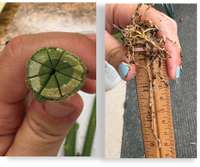
Wounded cambial tissue at the base of a cutting (left) and rooting of a cutting (right).
Underutilized perennial vegetable species including chaya (Cnidoscolus aconitifolius); Haitian basket vine (Trichostigma octandrum); and katuk (Sauropus androgynus) as well as fodder species like gliricidia (Gliricidia sepium) are frequently propagated asexually using vegetative cuttings. However, the success of using cuttings is variable, and increasing rooting using simple techniques may improve cutting survival and shoot regrowth. Additional wounding of cambial tissue may increase the number of adventitious roots produced, leading to higher cutting survival. In July, 2025 we cut and sanitized cuttings of the above species at the ECHO North American Regional Impact Center in Florida, USA, and divided into 6 treatments based on two main factors:
- air drying or not air drying the cuttings for one day before planting
- wounding the basal end of the cutting with a knife either once, 4 times, or not wounding.
All cuttings were randomly placed by species and replication into planting trays and maintained in similar greenhouse conditions. So far, we have collected the root initiate count and the longest root length of chaya and katuk which produced roots faster than the other two species. We planted successful cuttings into the field and will measure their height and canopy over time to evaluate in-field success.
Stay tuned for more about this trial!
Opportunities for Engagement
IV International Symposium on Underutilized Plant Species
We want to continue highlighting this event for those of you who are working with neglected and underutilized plant species. It will be held 20-24 October in Fort Myers, Florida, hosted by ECHO under the auspices of the International Society for Horticultural Science (ISHS). The ISHS webpage for the event, https://www.ishs.org/symposium/625, contains links for abstract submission and the event website with registration details. The deadline for abstract submission is past, but it is still possible to ask for a late code or to register and participate by simply attending and networking without presenting research. Registration rates are discounted for ISHS members and students.
Special journal issue on Agriculture and Faith
ECHO is assisting with the production of this special issue of the Accord Network journal, Christian Relief Development and Advocacy. Visit the Special Edition Website to find out more. There you will find a list of subtopics related to agriculture and faith, designed to stimulate ideas for writing.
.png?w=600) ECHO® International Agriculture Conference – 2025
ECHO® International Agriculture Conference – 2025
This will be the 32nd annual ECHO International Agriculture Conference, held November 11-13 (2025) in Fort Myers, Florida. See the conference website (https://conference.echocommunity.org/) for information on sharing and exchanging information via a poster session. Posters can be research or project oriented. One of the evening sessions will be devoted to updates and dialog about research that benefits small-scale farmers.
Knowledge Exchange
We welcome your input on the following:
- Would farmers in your area be interested in trialing a promising variety or practice on a small portion (to minimize risk) of their land (for relevance under their growing conditions)? This could be as simple as two small plots comparing an innovation side-by-side with traditional practice. Let us know if this is something ECHO could work with you on. We could help with experimental design, deciding what to measure, and data analysis.
- Would you be interested in trialing crop varieties in your context? Let us know if you would like to explore methodologies for one or more crops you are interested in.
- Do you have experience establishing Haitian Basket Vine (Trichostigma octandrum) cuttings in the field? We would be interested in learning from you.
- In reference to the work that Tom Bierma has done on MgCl2 and CaCl2 for seed drying, are these salts available in your area? Are they accessible to community seed banks?
Best regards,
Tim Motis, Ph.D.
Global Research and Publications Director
ECHO Inc.
To correspond with ideas and feedback about the topics of
this newsletter, email publishing@echonet.org.
